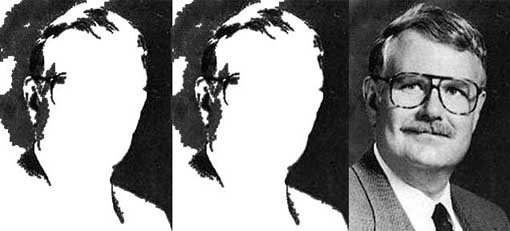The Omega Point loves us by Claire Evans
This is going to get deep.
I heard recently on BBC World Service that the Malaysian space program, itself a weird offshot of a 900 million dollar defense deal Malaysia recently struck with the Russians, is beginning to take shape. The 854 applicants to the program have been narrowed down to four, two of which will start training for a journey to the Internation Space Station in Russia’s Star City this summer.
A subject of debate is how these new cosmonauts, three of which are Muslims, will manage the daily rituals of Islam while in orbit. Worship, quite simple on Earth, is a huge inconvenience in outer space (like most accidentals of human life). Of course, this hasn’t usually been much of an issue in the past — “Western” astronauts, generally, have seperated their faith from their work. However, Islamic prayer necessitates a series of important observances. The Malaysian space program, Angkasa, is the first to grapple with the implications of ritual in space: a subject which will only become more relevant as we begin to broaden space programs internationally. The issues at hand, however, are perplexing. How can one face Mecca when Mecca is only a tiny point on a planet thousands of miles below? Further, prayer is determined by the movements of the Earth in relation to the sun — one prays five times throughout the day including sunset, sundown — yet in orbit, the sun rises and sets over a dozen times in the span of one “day.” Do you pray 60 times?
I can’t help but think of Yuri Gagarin, in 1961, returning from the first manned space mission and saying, “I looked and looked but I didn’t see God.” This statement represents the classic first foray into outer space theology. “I looked and didn’t see God” is of course irrelevant if you believe, like the Catholic Church, that God exists in a realm outside of physics, of the physical world. However, If you define the Universe as the totality of all that exists, the totality of reality, then (by definition) if God exists, (S)He either is the Universe or is part of it. I’m no theologian — my own spirituality is limited to severely dubious notions of New-Age connective crystal orgone meta-energies, or whatever — but this notion, presented here (to me) by Frank J. Tipler, a cosmic eschatologist and mathematics professor at Tulane, might become pressing in a world where faith and science are perpetually butting heads.
Of course, Tipler takes it to a weird place. In his 500 page book, “The Physics of Immortality: Modern Cosmology, God, and the Resurrection of the Dead,” which I read so that you don’t have to, he posits that theology and physics become quite entangled when we begin to think about the ultimate fate of our Universe. Clearly, Tipler argues, our planet is not immortal — the sun will destroy it sooner or later. If we are — or rather, if life is — to survive past this point, we/it must find a way to adapt itself to conditions outside of planet earth. This much is not particularly revolutionary. Tipler, like many left-field physicists before him, hyphothesizes a future scenario in which humans send self-replicating robot probes (known as Von Neumann probes) out into space, which would seed human life, plant colonies, and eventually engulf the entire Universe with life. However, if the Universe is finite (this is called the “Tipler Scenario,” as opposed to the “Dyson Scenario” of an infinitely expanding Universe), then it will recollapse into a Big Crunch after a finite amount of time.
Life, which by this time will have completely abandonned Earth (or “Gaia” if you’re a space-hippie), will be forced at this moment of critical mass to adapt and restructure itself to the imminent Big Crunch. Tipler suggests a whole series of insane things at this point:
1. Right before the Universe reaches its maximum size, life will have coalesced into a unified whole of undifferentiated artificial and human intelligence, called the “Omega Point,” computationally powerful enough to control the differential collapse of the Universe. The Omega Point will be omniscient, omnipresent, and omnipotent, and, further, will use the Universe’s collapsion as a source of energy.
2. If, while controlling the collapse, this unified whole of life-consciousness can use its energy to accelerate the speed its mental processes accordingly, it can experience a subjective infinite time during the last stages of the collapse — which is to say, there will be (in some form) eternal life.
3. Since the computational capacity of life will be accelerating exponentially faster than time runs out (futurists call this the “singularity,” which is epic), a massive and unified conscious computer could, hypothetically, run a simulation of the Universe including all human beings alive and dead forever, even though the actual Universe the computer is in lasts only a finite time. This all-powerful artificial intelligence will (“must,” claims Tipler, if life is to survive) provide us with “virtual time.” The Omega Point will be capable of running computer simulations of all intelligent life that has ever lived in the history of our Universe, effectively ressurecting the dead.
4. The Universe-Computer, run by the artificial intelligence that is the Omega Point, will be both personal and benevolent. It will be, or is, God.
Tipler (above), sort of summing it up: “the Earth itself must be transferred from what I shall call ‘ulimate reality,’ into a virtual reality, from real space into a cyberspace in the computer’s memory. If this is not done before the Sun leaves the main sequence, not only will much of the Sun’s total energy reserve be wasted, but the Earth will be completely destroyed by the expanding sun to no purpose. The Earth’s annihilation in real space is certain.”
Theories like Tipler’s aren’t, essentially, that much weirder than half of the shit I wholeheartedly believe in: Nikola Tesla being responsible for the Tunguska event, for example, or even String Theory. In fact, I sort of appreciate the Omega Point Theory because it is so destined to join the ranks of hundreds of other, great, fully marginal theories which made a similar attempt to find “scientific” justifications for matters of pure human subjectivity, such as religion. I’m thinking of Wilhelm Reich‘s theory of Orgone Energy, or the archaic (even occult) “noosphere” theory ofTeilhard de Chardin, who, incidentally, coined the phrase “Omega Point.” Or Tesla. Or, you know, all the astronomers before Copernicus.
Whether any of these ideas ever held any ground or ever will is almost irrelevant; they come and go, their science always shaky and devastatingly earnest. What matters, it seems, is their pressing desire to remind us of the urgency of our cosmology, or lack thereof. Tipler is probably wrong, or at least partially wrong, but I admire physicists who have the courage to completely betray their discipline in favor of a much grander, more beautiful, worldview. The really tripper Web-pundit Anders Sandberg, a Swedish Ph.D of Computer Science, wrote of the primary failing of Tipler’s theory that “Tipler has made the mistake of not only taking his theory seriously but also to believe in it. Belief in a theory tends to make us blind to all the assumptions which underlie it, and take them for granted, since the theory is ‘obviously reasonable.'”
Sandberg is probably saying that physicists must be objective in their postulations (rarely the case) but I think he’s also raising the point that belief, in all its ramifications, becomes complicated as soon as we leave the safety of our planet, which is so (obviously) central to our metaphysics. In any case, it makes trying to figure out how to do ritual Islamic ablutions while in zero-gravity with limited water supplies seem completely beside the point.
http://www.urbanhonking.com/universe/




